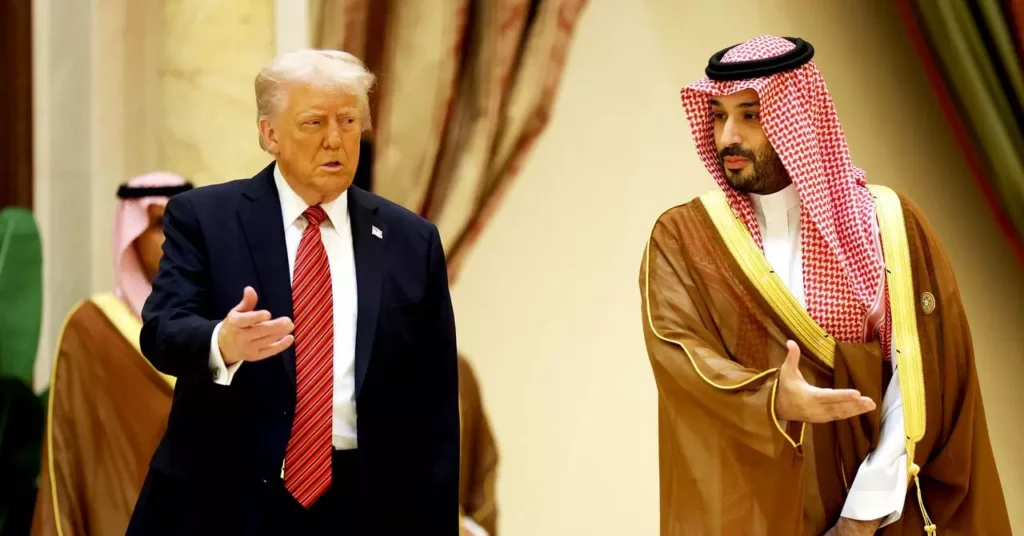Former President Donald Trump’s venture into the Middle East represents an ambitious intersection of technology, diplomacy, and economic strategy. This recent excursion has brought forth the United States’ engagement with the United Arab Emirates (UAE) and Saudi Arabia, heralding a fascinating shift in the global technological landscape. With a promise of building the most expansive artificial intelligence (AI) data center cluster outside North America, Trump’s meetings signify a broader motive—transforming the Middle East from a traditional hub of oil wealth into a vibrant center of digital innovation. The deal, involving a coalition of American tech giants and Emirates’ frontrunner in AI, G42, is untangling layers of opportunity and posing essential questions regarding the future of global AI development.
The UAE’s deliberate pivot towards being a technological powerhouse cannot be understated. As Sheikh Tahnoon bin Zayed Al Nahyan pointed out, this initiative aims to firmly establish the nation as a nucleus for advanced research and sustainable technological practices, beckoning a reality where innovation isn’t just ancillary but foundational to the region’s identity.
Saudi Arabia’s Compelling Technological Revolution
Following the UAE, Saudi Arabia’s alignment with U.S. technological advancements further signals a crucial transformation. The formation of Humain, a new AI investment firm backed by the Saudi Public Investment Fund, embodies the kingdom’s aspirations to integrated technological evolution into its national framework. With heavyweights like Nvidia and AWS involved, this initiative is set to provide the cornerstone for AI model training, propelling the region into an increasingly competitive global technology arena.
During a recent speech in Riyadh, Trump described potential bilateral agreements potentially worth hundreds of billions of dollars. While these numbers are staggering, they signify more than mere monetary transactions; they evoke the intertwining narratives of infrastructure, defense, and a shared future. Such strategic partnerships indicate the Middle East’s ambitions to evolve into a robust player within the technological sphere.
The Interplay of National Security and Technological Advancements
A crucial element in this unfolding drama is the fusion of technology with national security interests. As pointed out by Paul Triolo from DGA-Albright Stonebridge Group, the region’s access to technological resources is increasingly vital for its geopolitical strategy and security frameworks. The growing partnership between American tech companies and Middle Eastern states is more than just a business endeavor; it reflects a nuanced understanding of the geopolitical landscape where technological supremacy may dictate future power dynamics.
Reports suggest that Saudi Arabia is on track to harness an impressive 500 megawatts of capacity, bolstered by advanced Nvidia GPUs. This highlights not only ambition but also the tacit acknowledgment of technology as a defining feature of national security and economic sovereignty. As both kingdoms advance their infrastructure investments, they are gearing up for not only regional leadership but also a strong voice in global technology debates.
The Balancing Act: Western Engagement vs. Chinese Influence
However, an astute observer must scrutinize the broader implications of American-Middle Eastern partnerships against the backdrop of a rising China. While both the UAE and Saudi Arabia seek technological rejuvenation, their existing relationships with Chinese technology tools cast a shadow over the American engagement. The preceding presidential administration’s recent deregulation regarding tech sales signifies a shift aimed at reinforcing U.S. technological influence in a competitive arena, yet it raises concerns over the potential provocations this may invite.
Moreover, critics argue that dismantling the regulations forged under the Biden administration may compel these nations to reassess their allegiances. Are they truly committed to a path defined by U.S. technology, or will the allure of Chinese offerings become increasingly difficult to resist? Such strategic turns must be weighed carefully as nations carve out their futures in the digital age.
The High Stakes of Technological Sovereignty
At the heart of this technological race lies not only opportunity but a pressing set of challenges. As the Middle East embraces its technological aspirations, the ramifications of its choices will not only define its own future but also reshape the global dynamics of AI. The collaborative efforts initiated during Trump’s Middle Eastern expedition symbolize a critical moment—a moment fraught with both unprecedented possibilities and formidable challenges.
Navigating this landscape requires finesse as Middle Eastern nations engage with American companies while reconsidering their ties to other global players. The roadmap ahead is complex, and the implications of every decision resonate far beyond the realm of commerce; they can define alliances, influence power dynamics, and ultimately determine technological sovereignty at a time when such sovereignty is both coveted and contested. The stakes have never been higher, and the consequences of this technological transformation will be felt globally for years to come.









Leave a Reply